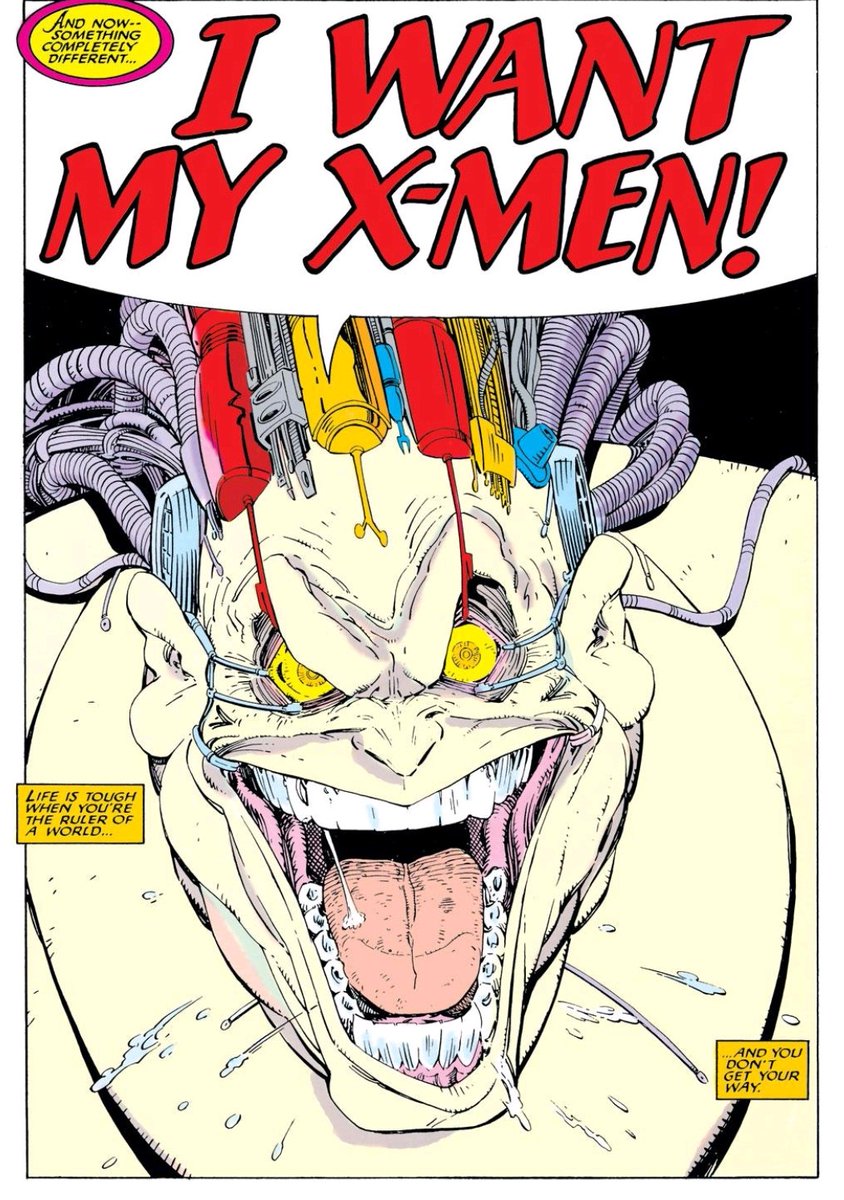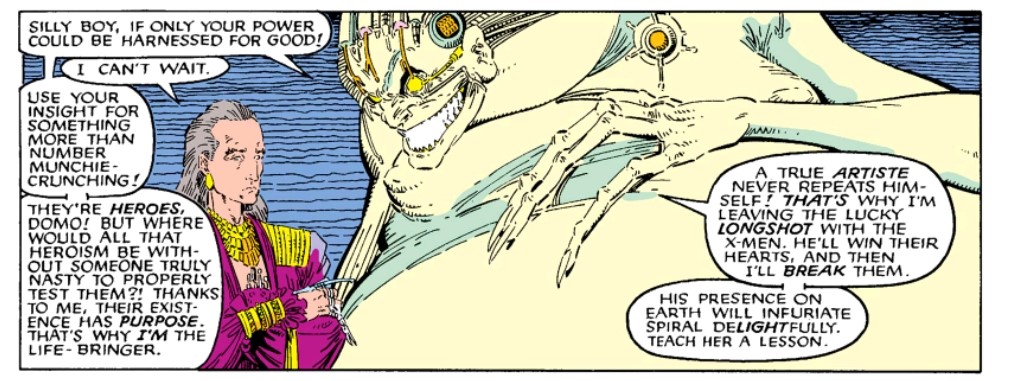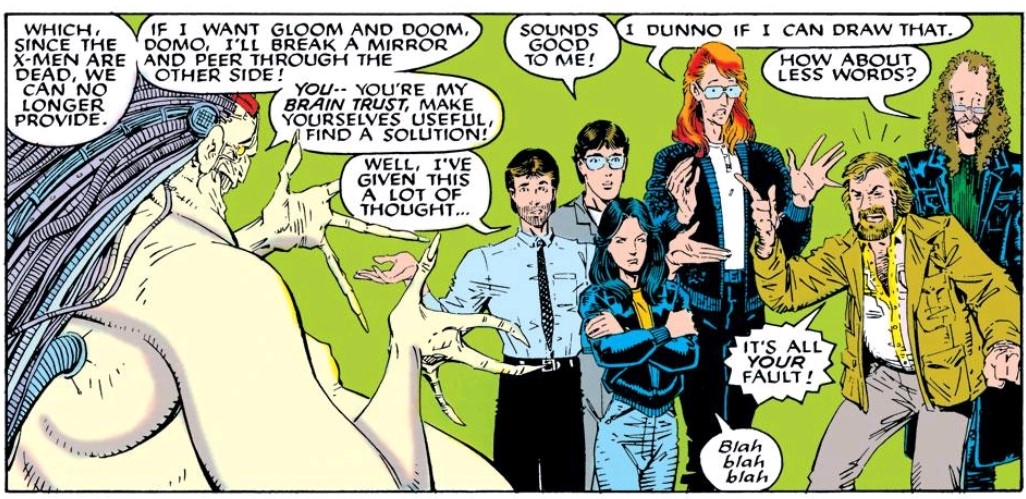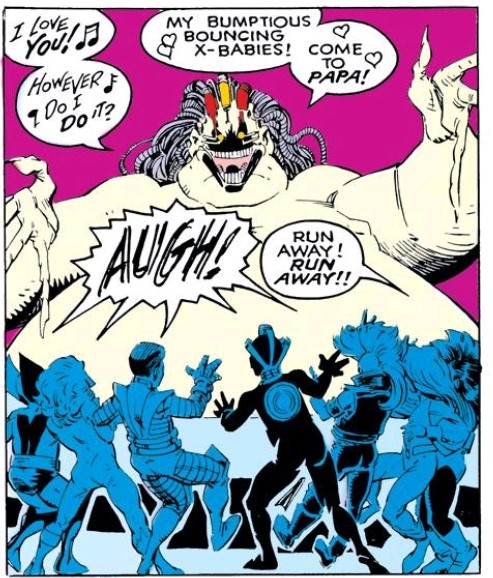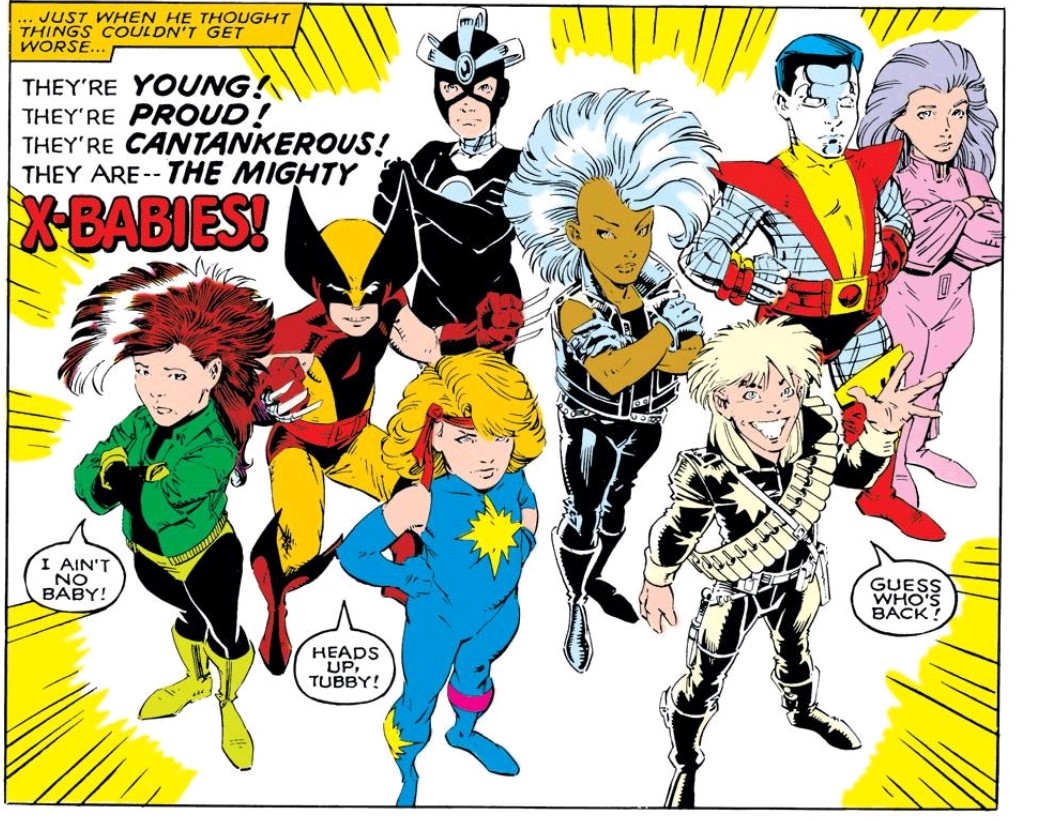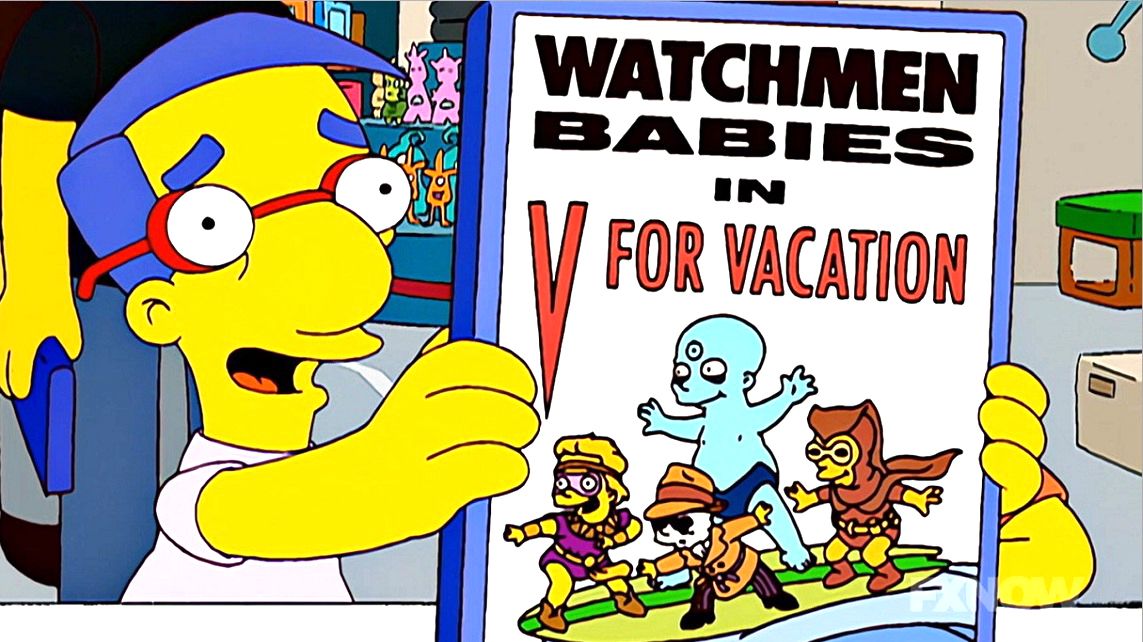Mojo originated as a character in Ann Nocenti and Art Adams’ “Longshot” miniseries, before becoming an X-Men villain who allowed Claremont to go meta and satirize his own industry. #xmen 1/6
Mojo is a mix of slapstick silly (in terms of dialogue) and nightmarish horror (in terms of visuals - a testament to Art Adams& #39; skill). Due to his surreal nature, he generally only appears in annuals and specials to protect tonal consistency and increase impact. 2/6
The satirical aspect is established through several references to Marvel comics production as well as the presence, on-page, of the X-Men creative teams, such as Claremont, the Simonsons, Art Adams and Ann Nocenti in several instances. 3/6
In the broad sense, Mojo is a symbol of the influence of corporate greed upon media; the villain is characterized as a faux-artist (literally spineless) who will cross any moral boundary for the sake of ratings, marketing, and merchandising. 4/6
For Claremont, Mojo symbolized regression specifically. In all of his appearances, he forces the heroes into a child-like state, thus offering an intriguing contrast to the direction of UXM at the time and hinting that the powers that be wanted UXM to regress. 5/6

 Read on Twitter
Read on Twitter